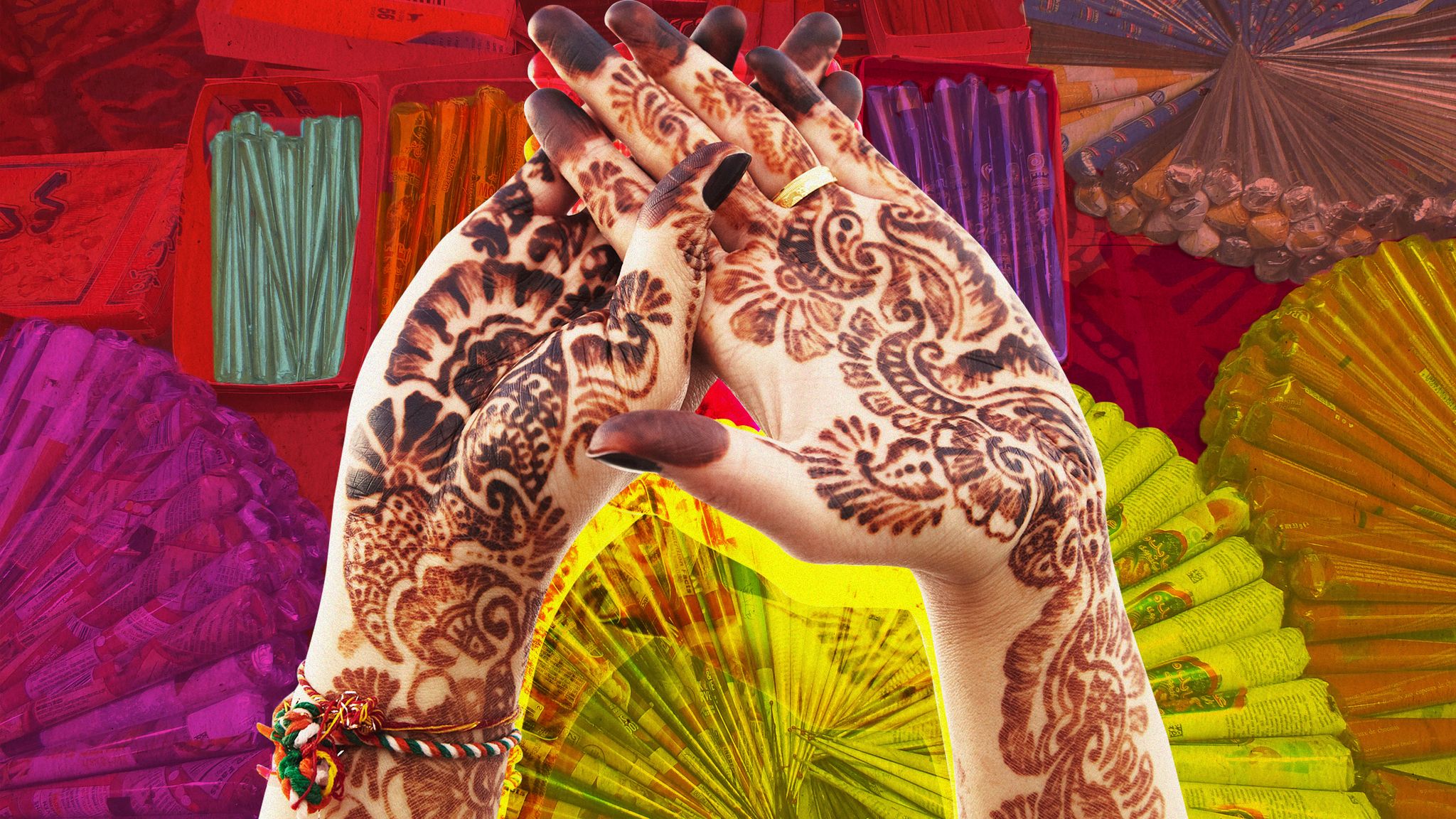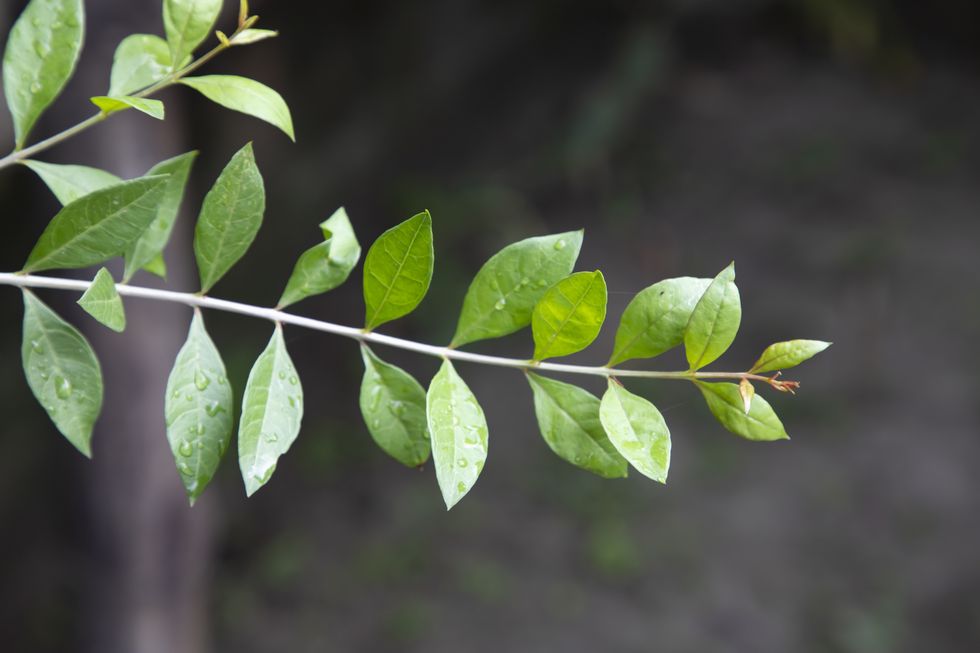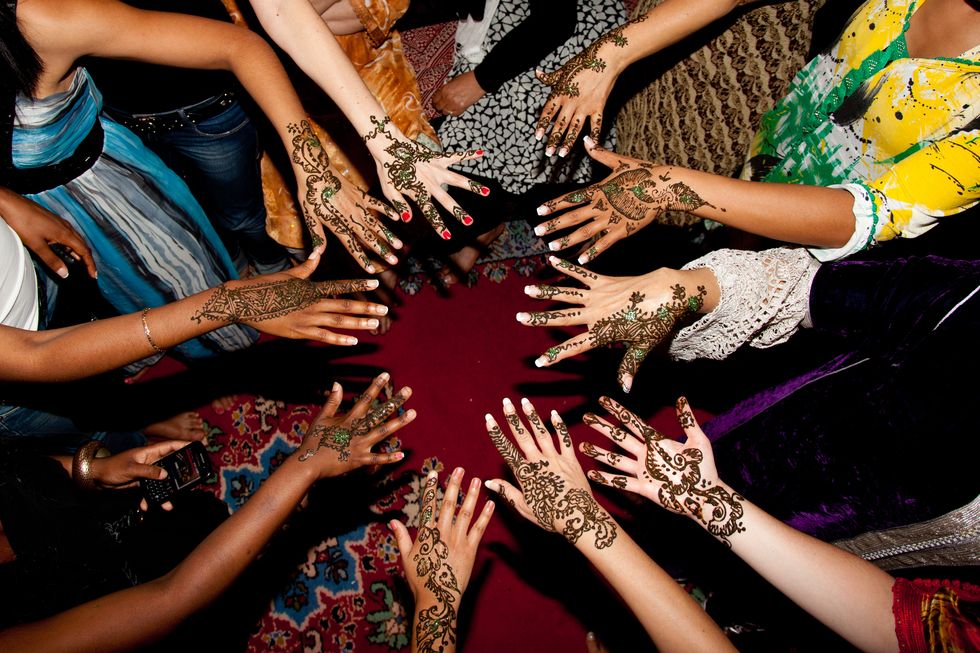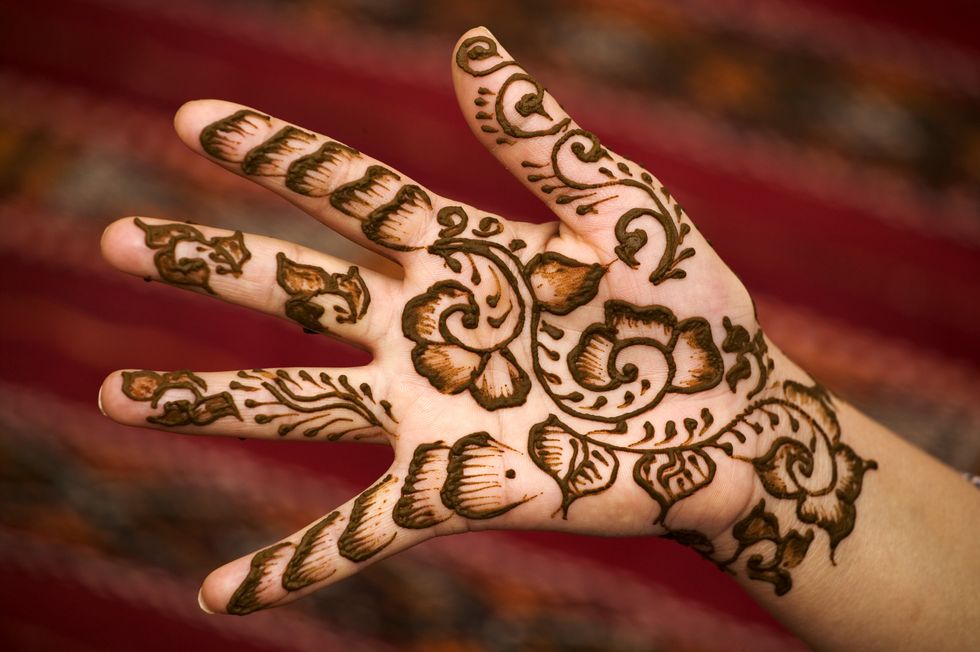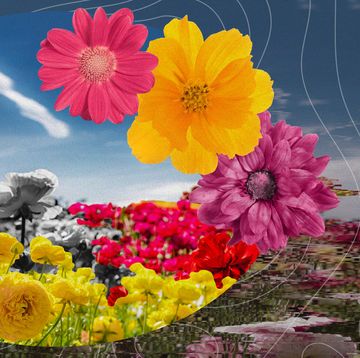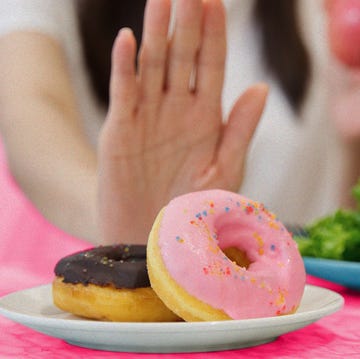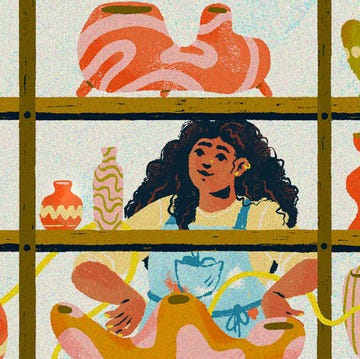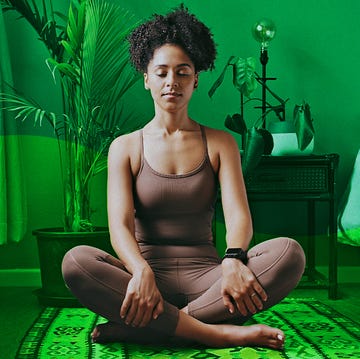Sumeyya Rehman sits in a chair with her hand outstretched over a pillow, drawing an intricate design from palm to elbow with reddish-brown paint. It’s not someone else’s arm she’s painting. It’s her own.
“I actually don’t like having henna on as much as just doing henna art because that is my relaxation therapy,” says Rehman, owner and lead artist at Chicago-based studio Henna Craze.
Known for its rich stain and intricate, long-lasting designs, henna art is traditionally a South Asian, Middle Eastern, and North African social practice, but it's become trendy in the Western world over the past 30 years. (Celebrities including Madonna, Rihanna, Kylie Jenner, Gigi Hadid, and Ariana Grande have been spotted sporting henna art on their bodies.) Now, the organic art form is increasingly popular as a therapeutic self-care ritual.
What is henna?
The henna plant contains lawsone, a skin-safe red-orange dye that’s been used for more than 5,000 years. To create a henna paste with the correct pH level, henna leaves are combined with essential oils and a miscible liquid.
The resulting mixture has cooling, soothing, and hydrating properties, according to henna artist and Ayurvedic specialist Bhavdeep Kaur. Alongside their individual healing properties, Kaur says, “Oils such as tea tree, niaouli, and cajeput are high in terpenes that increase the ability of the lawsone molecule to develop its dye.”
Research suggests the henna plant contains substances that might help fight certain infections, as well as relieve pain and decrease the growth of tumors. The process of applying the paste is considered by many to lower stress. “It’s relaxing to add in the oils and see the smoothness of the mixture,” Rehman explains. “It always gives my heart a bit of joy to think of how fun it’ll be to work with.”
What is henna art?
Traditionally, henna art features detailed mandalas — symbols representing the universe in its ideal form — and geometric patterns created by precise, skillfully proportioned lines. A henna artist can spend hours crafting elaborate individual designs for each client. Henna artists often practice their craft on themselves to hone their skills and try innovative designs. “It’s something that I need to do,” Rehman says, “so that I can stay sane and be happy.”
When artists work on their own hands, they’re free to experiment and test the bounds of their ability. “That’s where the creativity comes in because a lot of my clients will have me do what’s popular,” Rehman says. “What I do on myself are the designs that nobody would pay me to do.”
How difficult is it to practice henna?
Henna art lasts for two to three weeks, and henna paste must remain on the skin for hours until the color develops. Therefore, the medium lends itself to experimentation. Artists can test different designs and techniques without worrying about long-term consequences, an extension of henna art’s relaxing and carefree appeal.
University of California, Los Angeles, sophomore Anoushka Bhat started her club Henna With a Heart to help students take a moment to slow down from the stressful educational environment. Every week, members meet to hone their skills and exercise their imaginations. “Henna always calms me down,” Bhat says. “It’s relaxing to draw a beautiful design of your own creation. If you mess up, it goes away in a couple of weeks.”
Henna art is friendly to beginners, and novices are often surprised by their ability to quickly pick up the medium. As artists’ skills grow, their confidence develops, and their creative abilities increase. “We have creative sprints where members can do any design they like,” Bhat says. “Henna is very learnable, and having that growth through henna brought a lot of people together.”
Who should practice henna?
Community has always been central to henna art. Traditionally, it’s an important part of festivities — particularly weddings — in many cultures. Henna ceremonies serve as a way for women to socialize and prepare for an upcoming event. On a smaller scale, women often come together at henna parties to enjoy artwork and one another’s company in a calming atmosphere. “It’s built into our culture,” Rehman says. “Henna has always been a way for women to slow down, to take time for themselves, and to have a breather.”
Honoring henna’s cultural roots while being innovative is key for artists. Many argue that applying henna art without a connection to its history is a form of cultural appropriation. And preserving traditional designs while stretching the boundaries of henna’s potential can be tricky, according to Rehman. “I see a lot of people using henna as a tattoo,” she says. “In the Western context, the easiest way to translate henna art is henna tattoo, but the word tattoo has very different connotations. As an art form, it’s different.”
Bhat says she and her club members begin by mastering traditional designs before moving on to more contemporary ones, which have included unicorns and pop culture characters. “I don’t think there’s a reason to gatekeep it,” she says. “As long as you respect where it came from and are excited to learn it, I don’t see anything wrong with trying your own designs. We will always respect the past but look into the future as we move forward.”
In a time when women are increasingly busy and often overwhelmed, Rehman notes that henna art can provide a creative, calming outlet unlike other forms of self-care. “We live in a society that tells us we have to be productive all the time,” she says. “We don’t always have to be that way. We can also just enjoy some art on our hands and have a bit of slowness in our day.”
Divya Bhardwaj is a student at Northwestern University’s Medill School of Journalism.
Get Shondaland directly in your inbox: SUBSCRIBE TODAY
